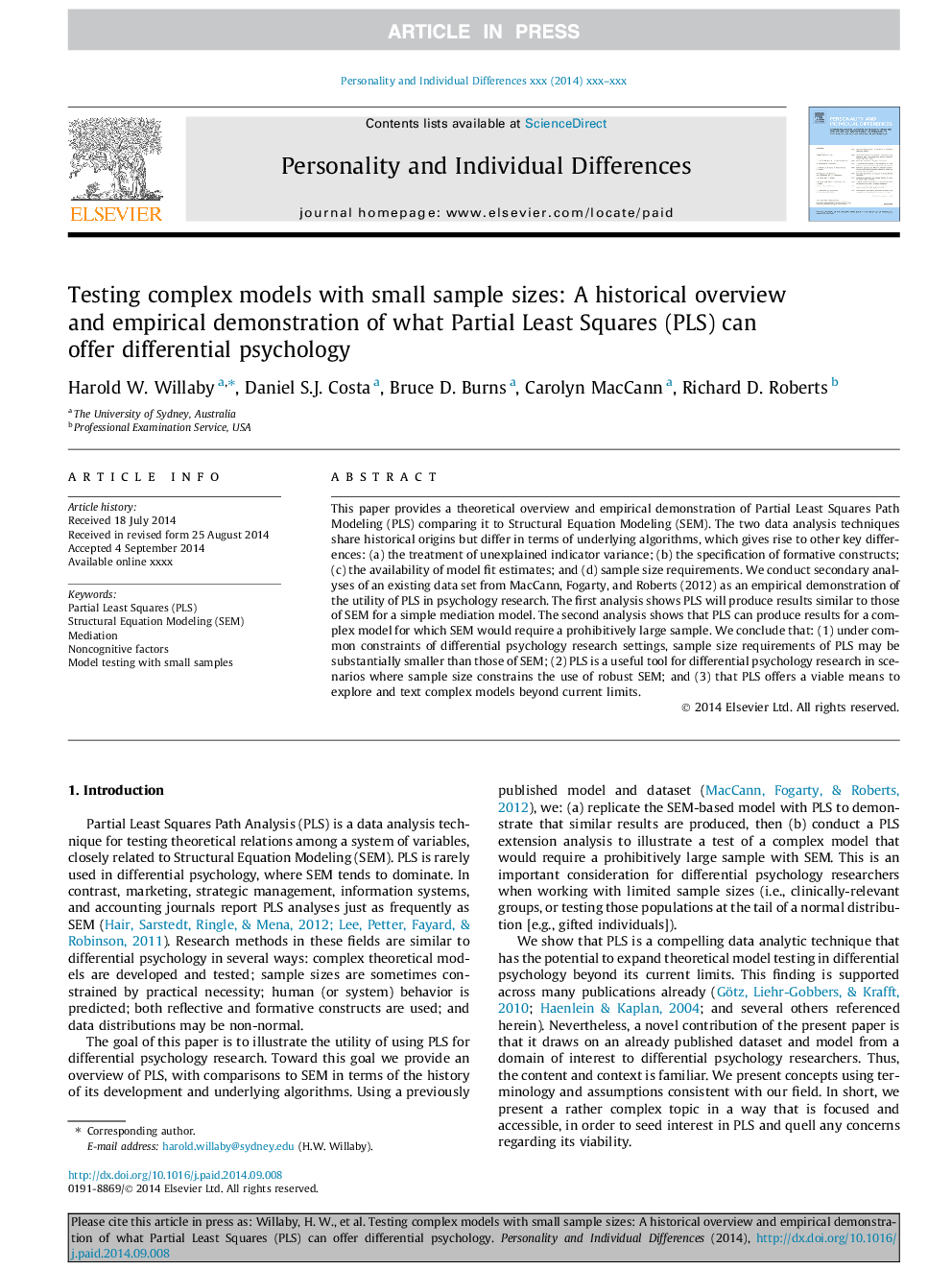| Article ID | Journal | Published Year | Pages | File Type |
|---|---|---|---|---|
| 7251437 | Personality and Individual Differences | 2015 | 6 Pages |
Abstract
This paper provides a theoretical overview and empirical demonstration of Partial Least Squares Path Modeling (PLS) comparing it to Structural Equation Modeling (SEM). The two data analysis techniques share historical origins but differ in terms of underlying algorithms, which gives rise to other key differences: (a) the treatment of unexplained indicator variance; (b) the specification of formative constructs; (c) the availability of model fit estimates; and (d) sample size requirements. We conduct secondary analyses of an existing data set from MacCann, Fogarty, and Roberts (2012) as an empirical demonstration of the utility of PLS in psychology research. The first analysis shows PLS will produce results similar to those of SEM for a simple mediation model. The second analysis shows that PLS can produce results for a complex model for which SEM would require a prohibitively large sample. We conclude that: (1) under common constraints of differential psychology research settings, sample size requirements of PLS may be substantially smaller than those of SEM; (2) PLS is a useful tool for differential psychology research in scenarios where sample size constrains the use of robust SEM; and (3) that PLS offers a viable means to explore and text complex models beyond current limits.
Related Topics
Life Sciences
Neuroscience
Behavioral Neuroscience
Authors
Harold W. Willaby, Daniel S.J. Costa, Bruce D. Burns, Carolyn MacCann, Richard D. Roberts,
